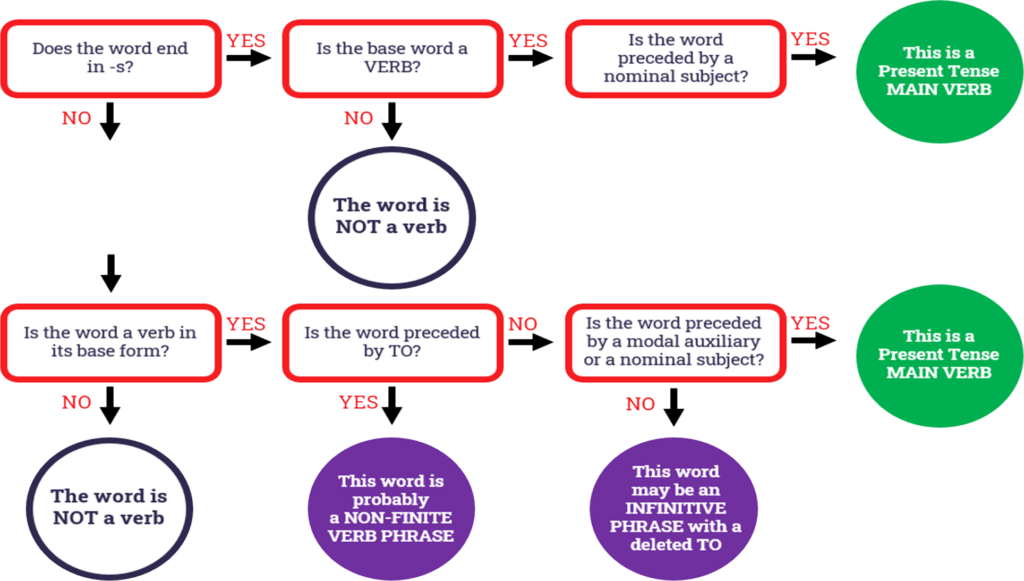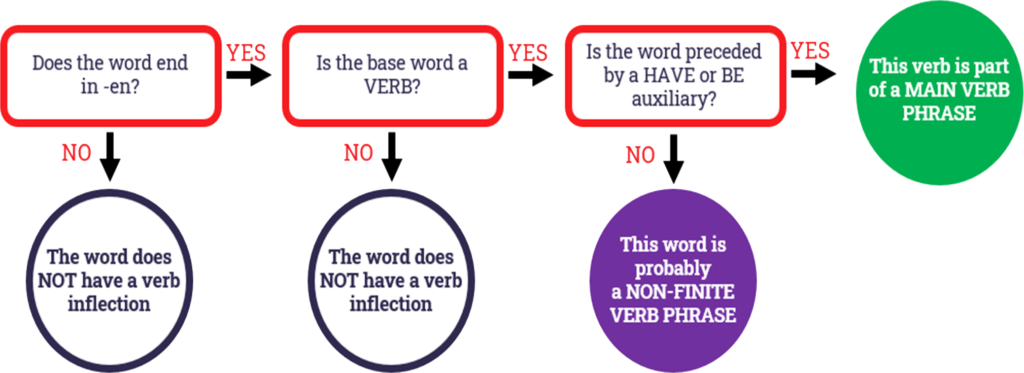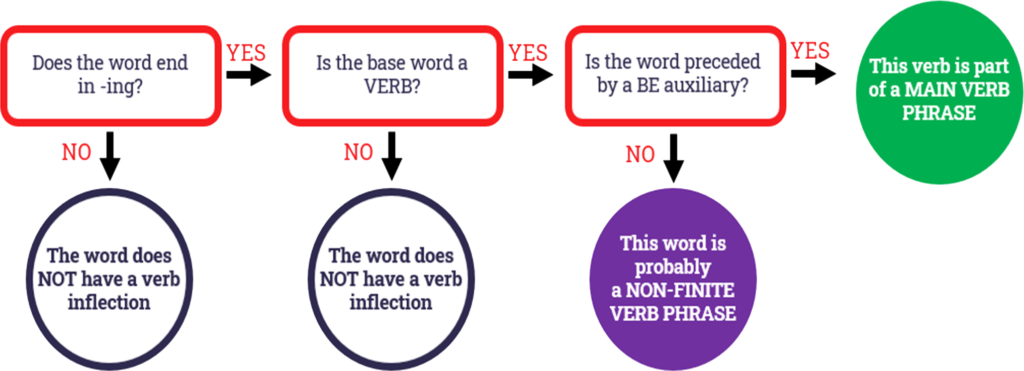Chapter 02-04: Phrases I – Main Verb Phrase Forms
chapter 2: main verb phrase forms
As you analyze the main verb phrases of clauses, you can remember the main verb phrase FORMS because they always follow the pattern described by the Main Verb Phrase Formula. In other words, main verb phrase forms name just the main verb phrase irregardless of context. We’ll describe other ways to understand main verb phrases in context in future chapters. You can look specifically for these common markers in the main verb phrase forms:
Simple Present or Simple Past
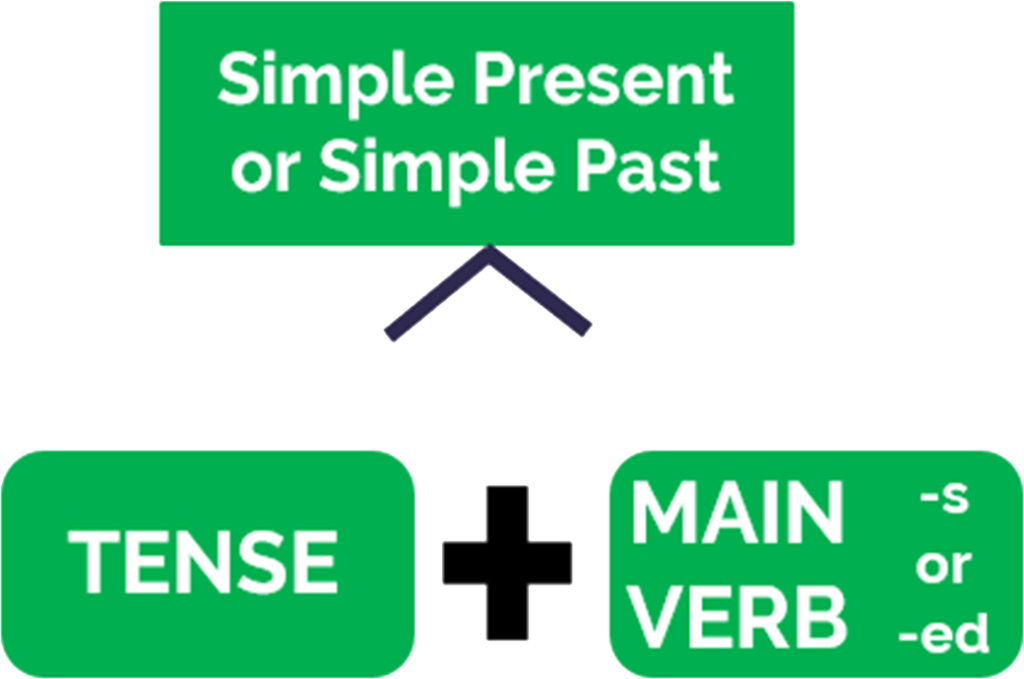
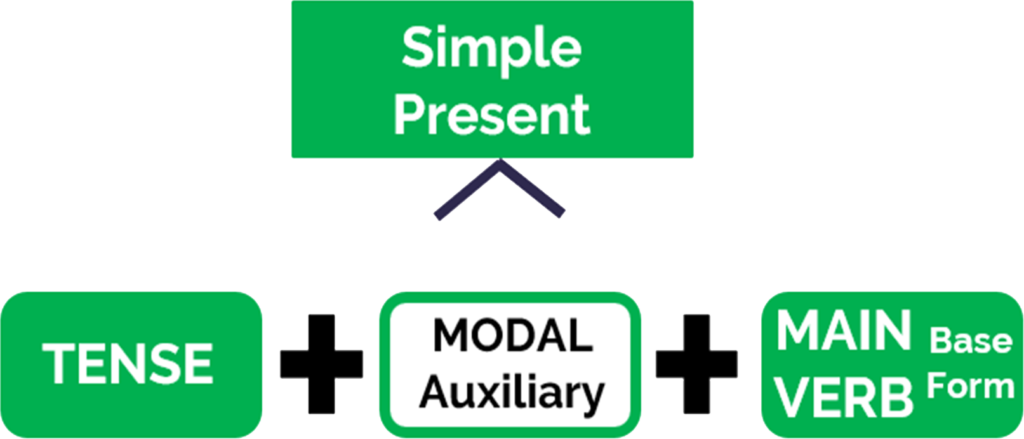
Carol speaks = (Carol) + present + (speak)Carol will speak = (Carol) + present + modal + (speak)Carol spoke = (Carol) + past + (speak)
Present Perfect or Past Perfect

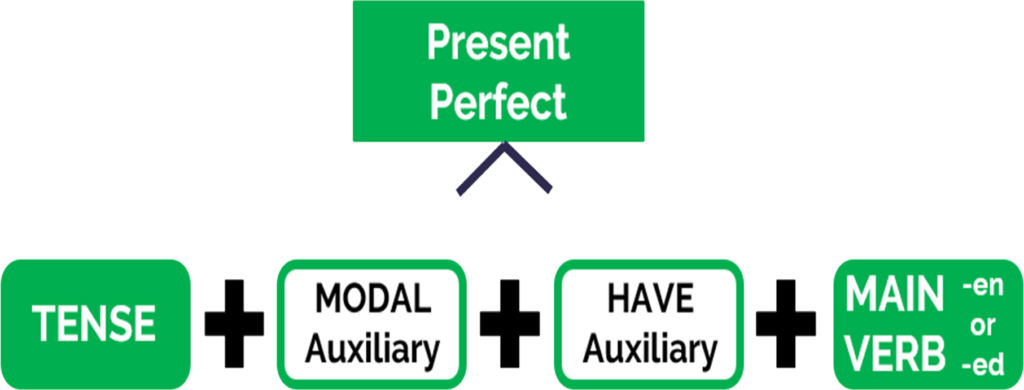
Carol has spoken = (Carol) + present + HAVE + [-en] + (speak)
Carol will have spoken = (Carol) + present + modal + HAVE + [-en] + (speak)Carol had spoken = (Carol) + past + HAVE + [-en] + (speak)
Present Progressive or Past Progressive

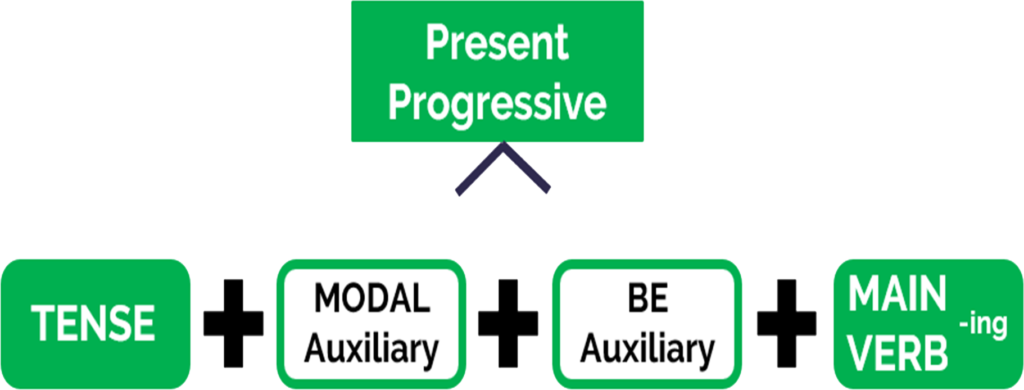
Carol is speaking. = (Carol) + present + BE + [-ing] + (speak)
Carol will be speaking. = (Carol) + present + modal + BE + [-ing] + (speaCarol was speaking. = (Carol) + past + BE + [-ing] + (speak)
Present Perfect Progressive or Past Perfect Progressive
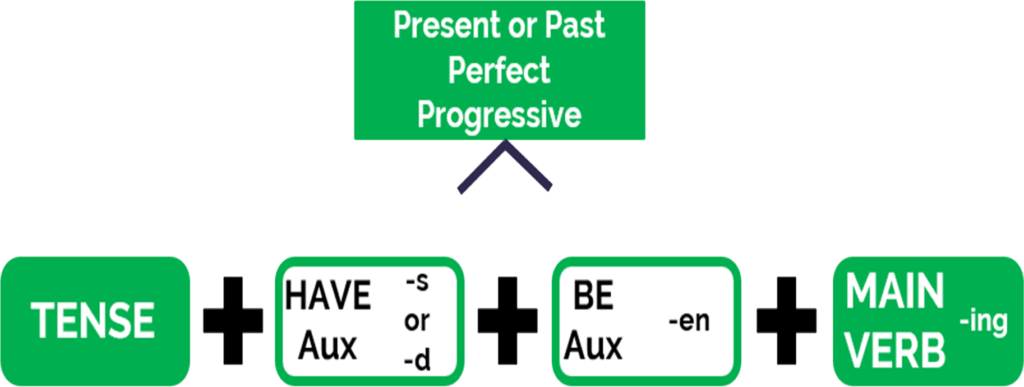

Carol has been speaking. = (Carol) + present + HAVE + [-en] + BE + [-ing] + (speak)
Carol will have been speaking. = (Carol) + present + modal + HAVE + [-en] + BE + [-ing] + (speak)Carol had been speaking. = (Carol) + past + HAVE + [-en] + BE + [-ing] + (speak) The four forms above are the ACTIVE main verb phrase FORMS, but we also have to account for a final main verb phrase FORM: the passive form. It is important to remember that the passive main verb phrase form is a grammatical structure: BE + [-en] or [-ed].
Present Passive or Past Passive

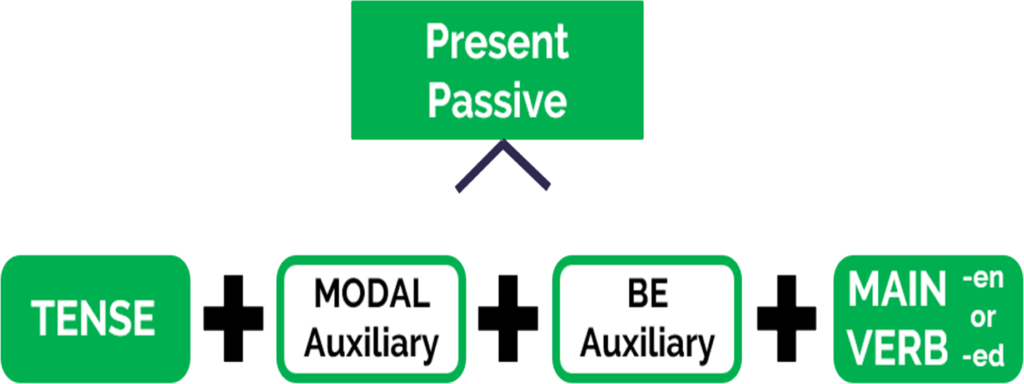
The ball is thrown by Jane. = (The ball) + present + BE + [-en] + THROW
Old books are sold by the library. = (Old books) + present + BE + [-ed] + SELL
The ball was thrown by Jane. = (The ball) + past + BE + [-en] + THROW
The key to recognizing a passive structure should start and end at the main verb phrase. In other words, the auxiliary combination BE + [-en] or [-ed] identifies the passive voice, and this is the only thing that you need to look for.
Remember, when BE is an auxiliary, the common (or active) inflection is the progressive form: BE + [-ing]. When analyzing the main verb phrase, suspect a passive construction whenever BE is an auxiliary and the progressive form (+ [-ing]) is NOT there.
- Millions of dollars are wasted by defense industries each year.
- Food will be donated by a caterer.
- A new house is being built down the street.
- Our refrigerator has just been repaired.
AN IMPORTANT NOTE: Remember, passives are NOT the same as past tense. The passive is a main verb phrase that can take either present tense or past tense. What can be confusing is that the main verb in the passive structure takes the perfect inflection [-en], which will often take the irregular [-ed] form. For example,
1. The boy is tricked into clucking like a chicken.
2. SOMEONE tricked the boy into clucking like a chicken.
The first is a passive construction (BE + [-en]). However, it’s present tense (IS).
The second is past tense (PAST + TRICK).
TENSE inflects in the MVP Formula at the beginning of the phrase and only the first element that follows TENSE. Again, DO NOT look at the end of the Main Verb Phrase and assume tense. It’s a very bad habit to get into.
Also, keep in mind that although it is the lone exception to the Main Verb Phrase Formula, the Passive is really just another Main Verb Phrase Form that you must account for. Besides the Present Passive and Past Passive that I described above, you can have other variations, as well.
You can have a Present Perfect Passive:
The girl has been seen by her friends.
Present + HAVE + [-en] + BE + [-en] + see
You can have a Past Perfect Passive:
The girl had been seen by her friends.
Past + HAVE + [-en] + BE + [-en] + see
You can even have a Present and Past Progressive Passive (although it begins to get a bit clunky):
The girl is being seen by her friends.
Present + BE + [-ing] + BE + [-en} + see
The girl was being seen by her friends.
Past + BE + [-ing] + BE + [-en} + see
Technically, you can go right down the list through the Perfect Progressive, but it really grates on the ears.
You can use the following flowcharts to guide your analysis. Take your time learning all of these flowcharts. This is a skill you will need to master because recognizing Main Verb Phrases is the key to success for the rest of the semester.

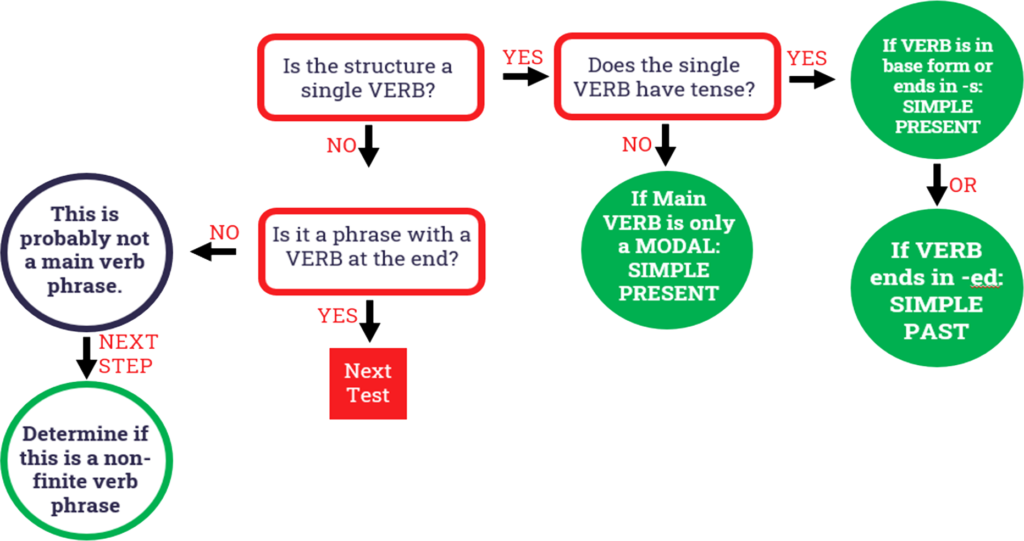
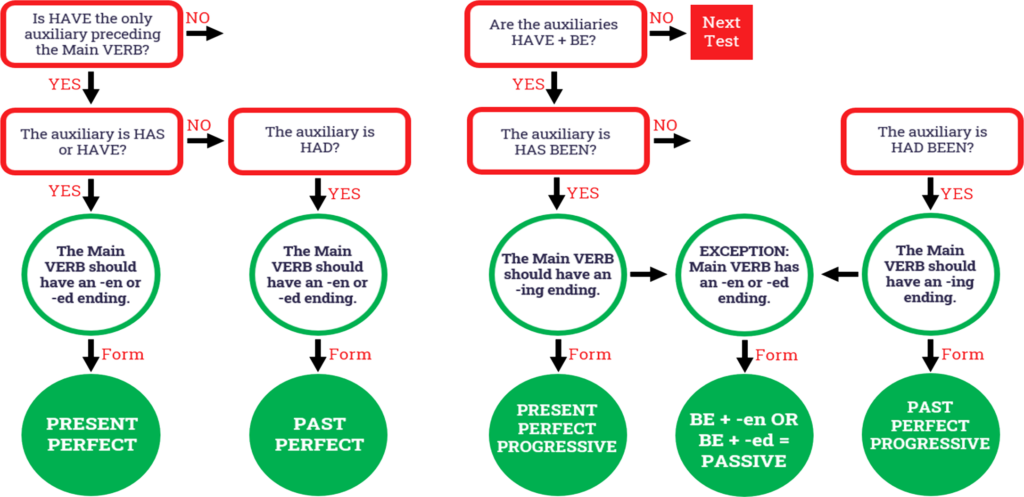
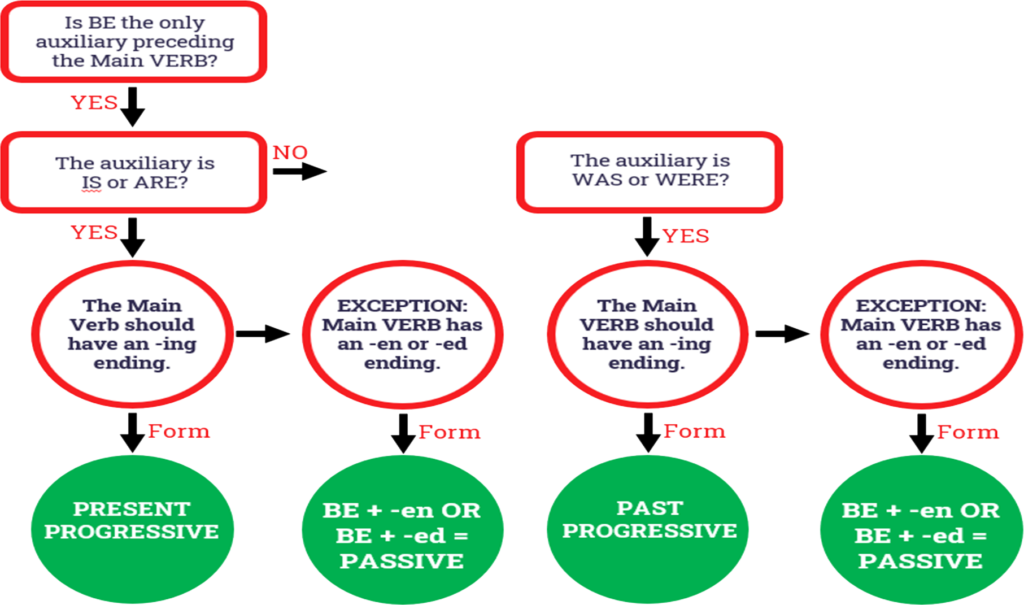
Finally, while we will discuss non-finite verb phrases in more detail in Chapter 3, you need to be able to distinguish the difference between a Main Verb Phrase and a Non-Finite Verb Phrase. You can use this flowchart as a starting point for recognizing the differences:
